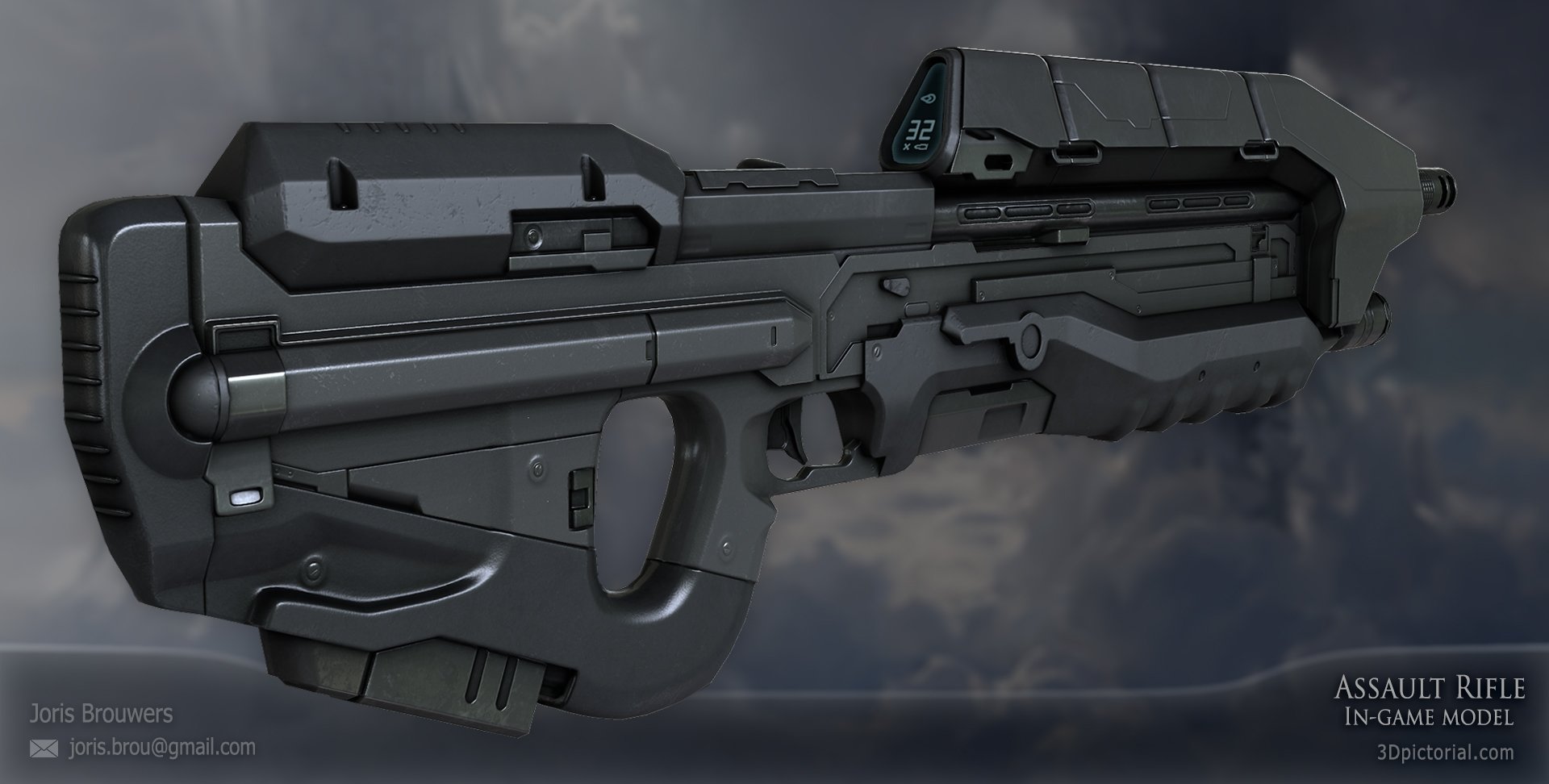Halo 3/4 Assault Rifle [WIP]
Here are the final renders:





model
I hope you like it!
-------------------------
I started working on the assault rifle from Halo a while ago. I want it to be a remastered version of the Halo 3 rifle, with the amount of detail the Halo 4 version has. I don't like the sci-fi look on the Halo 4 ar, so I tried to keep certain shapes more smooth like in the Halo 3 version.
I want this to be a portfolio piece, so critiques are very much appreciated.








model
I hope you like it!
-------------------------
I started working on the assault rifle from Halo a while ago. I want it to be a remastered version of the Halo 3 rifle, with the amount of detail the Halo 4 version has. I don't like the sci-fi look on the Halo 4 ar, so I tried to keep certain shapes more smooth like in the Halo 3 version.
I want this to be a portfolio piece, so critiques are very much appreciated.




Replies
I think its going to look great when its done
All I changed to improve the bake was this:
1. Bake in 3ds Max instead of XNormal.
2. Use .obj instead of .fbx for previewing in Substance Painter.
3. Triangulate the mesh when exporting. (I don't know if 3ds Max uses a triangulated version when baking?)
The topology, smoothing groups and uv's haven't changed since the last post. Also I went from ~2500 to 1180 tris after optimizing more so it was definitely worth it.
Next update will probably be the complete low poly, unless I run into some interesting problems that I feel like sharing. Should be fun!
If you use a normal map hard edges arent any problem, just make sure that the hard edges are cut on the UV.
In regards to your question about if 3ds max uses triangulated mesh for rendering: yes.
All meshes are tris all the time but some of the edges are marked as "hidden" to make selections easier.
The problem is when you export a mesh without clearly marking what direction the "hidden" edge is it might get flipped in the new program.
That's the gist of the problem you had, when baking the baker might cut the quads one way and your viewer might cut the quads the other way, resulting in both uv's stretching in a weird way and normal being off if you try and bake with a quad mesh.
Here are some images:
Baked ambient occlusion and normals, curvature from Photoshop:
Substance Painter:
UE4:
It's 11.891 polys.
Textures next!